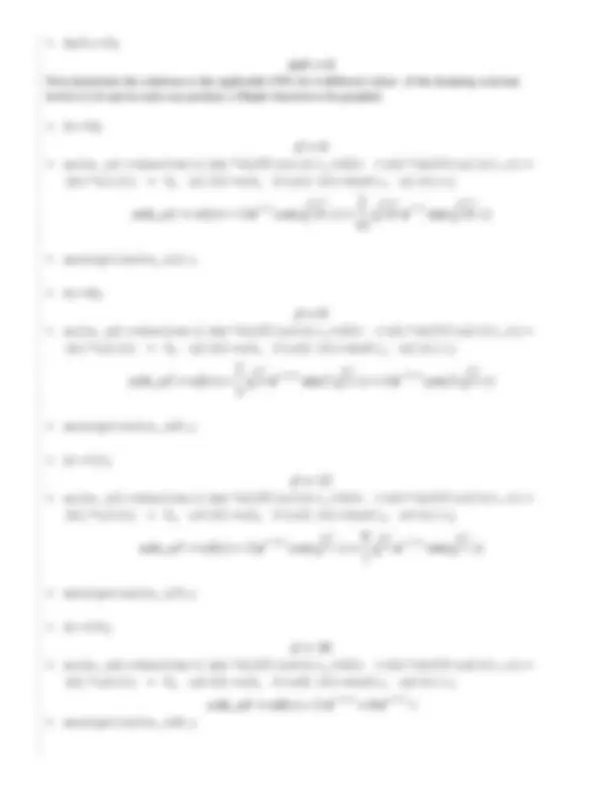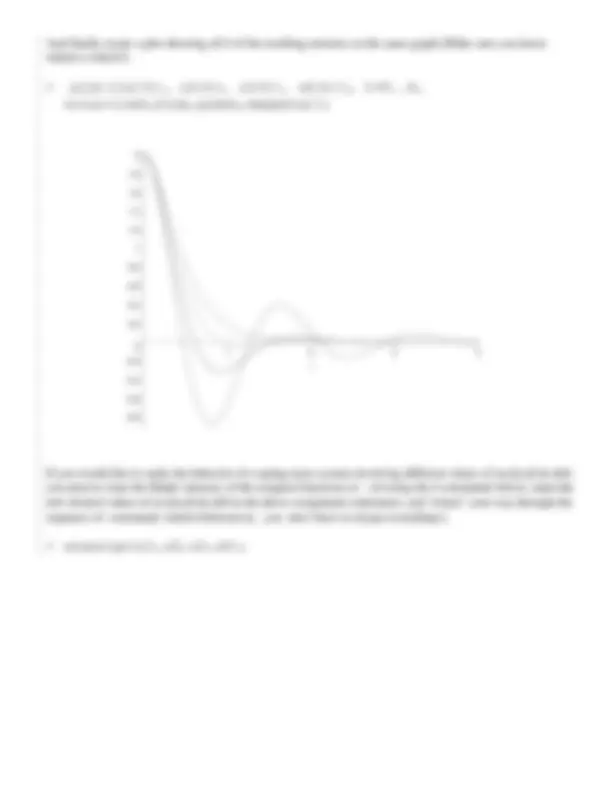




Study with the several resources on Docsity

Earn points by helping other students or get them with a premium plan


Prepare for your exams
Study with the several resources on Docsity

Earn points to download
Earn points by helping other students or get them with a premium plan
Community
Ask the community for help and clear up your study doubts
Discover the best universities in your country according to Docsity users
Free resources
Download our free guides on studying techniques, anxiety management strategies, and thesis advice from Docsity tutors
Instructions for a lab session on applied differential equations i, focusing on the role of damping in free vibration problems and the phenomenon of beats and resonance in forced vibration problems. It also covers using the 'dsolve' maple tool to find the general solution of odes and applying initial conditions. Examples of solving ivps with varying damping coefficients and plotting the results.
Typology: Lab Reports
1 / 4

This page cannot be seen from the preview
Don't miss anything!



Math 2310 - Applied Differential Equations I Lab Session 8
Goals: (1) A better understanding of Mechanical Vibration (Spring-Mass) problems specifically focusing on: (a) The role of damping in Free Vibration problems. (b) A mathematical understanding of the phenomenon of Beats and Resonance in Forced Vibration problems. (2) Competence using the "dsolve" Maple tool to aid in goal (1).
Invoke the following Maple command to use Maple to find the general solution of the ODE
t t
y( ) t 2
t
y( ) t y( ) t 0
Solutions to IVPs are no more difficult. To obtain the solution to
t t
y( ) t 2
t
y( ) t y( ) t 0
y 0( ) = 2 D( y )( 0 ) = 1
only the initial conditions need to be included in the "dsolve" call. Note the notation used to describe the ICs and the enclosure of the ODE and ICs within {}’s.
This result indicates that application of the specified ICs leads to the values of _C1=2 and _C2=-1. Using these in the previously determined general solution selects the unique function satisfying not only the ODE, but the ICs as well.
Finally, to plot the solution to the above IVP, use the following sequence of commands. Maple’s return at each step is shown.
The following "assign" call in Maple converts the Maple expression named soln_y to a Maple function named y( ) t which will allow you to plot the solution Maple determined using "dsolve".
t
0.2 0.4 0.6 0.8 1 1.2 1.4 1.6 1.8 2
2
1
0
The last step of the process is to clear Maple’s memory of the current expression for y(t) with the "unassign" command. If this is not done, subsequent expressions involving y(t) will lead to error warnings.
Here is an example of how Maple can be used to study the effect of varying the damping coefficient for the spring-mass system modeled by
m + + =
t t
u( ) t d
t
u( ) t k u( ) t 0
u 0( ) = u D( u )( 0 ) = du
To begin, assign specific values for the mass ( m ) and spring constant ( k ) which will remain constant in our study.
Input the desired initial conditions as well. Here the mass is assumed 2 units below the equilibrium position and released with no initial velocity at t =0.
And finally create a plot showing all 4 of the resulting motions on the same graph (Make sure you know which is which?).
t
1 2 3 4
2
1
0 -0. -0. -0. -0.
If you would like to study the behavior of a spring-mass system involving different values of m,d,k,u0 & du0, you need to clear the Maple memory of the assigned functions u1 - u4 using the 4 commands below, input the new desired values of m,d,k,u0 & du0 in the above assignment statements, and "return" your way through the sequence of commands which followed (ie, you don’t have to retype everything!).